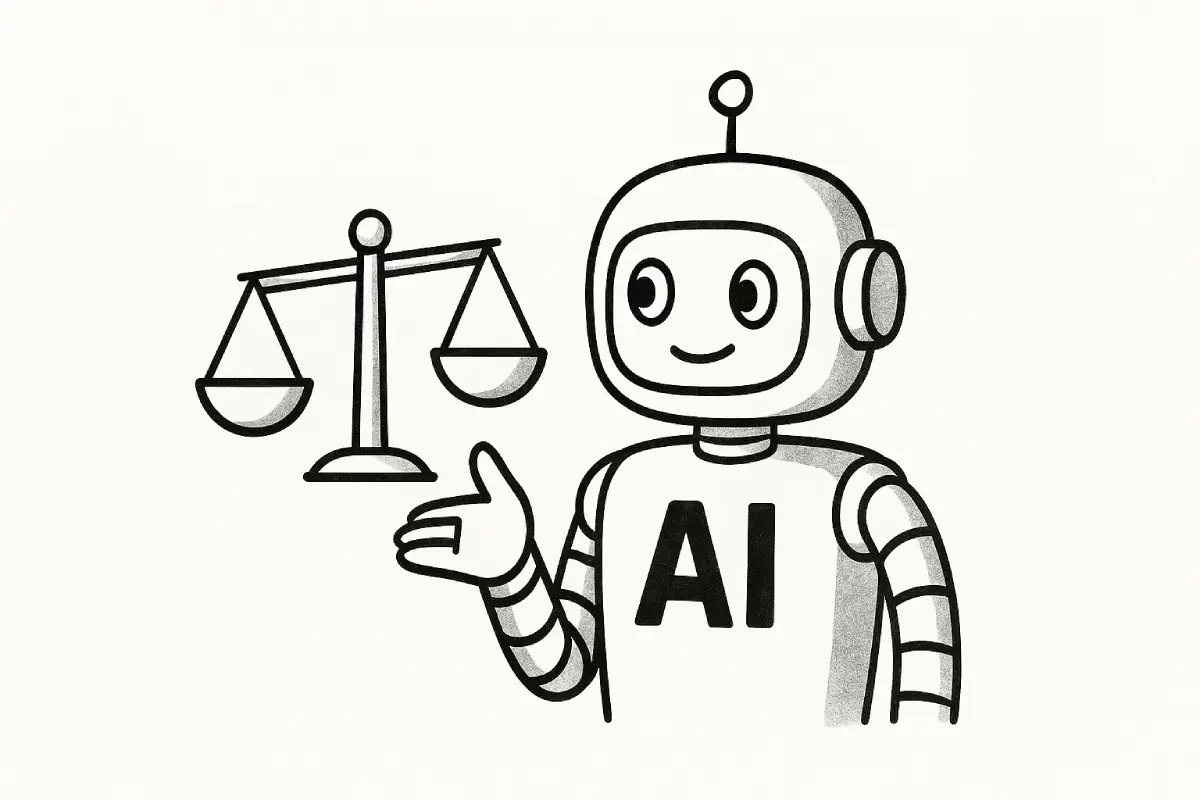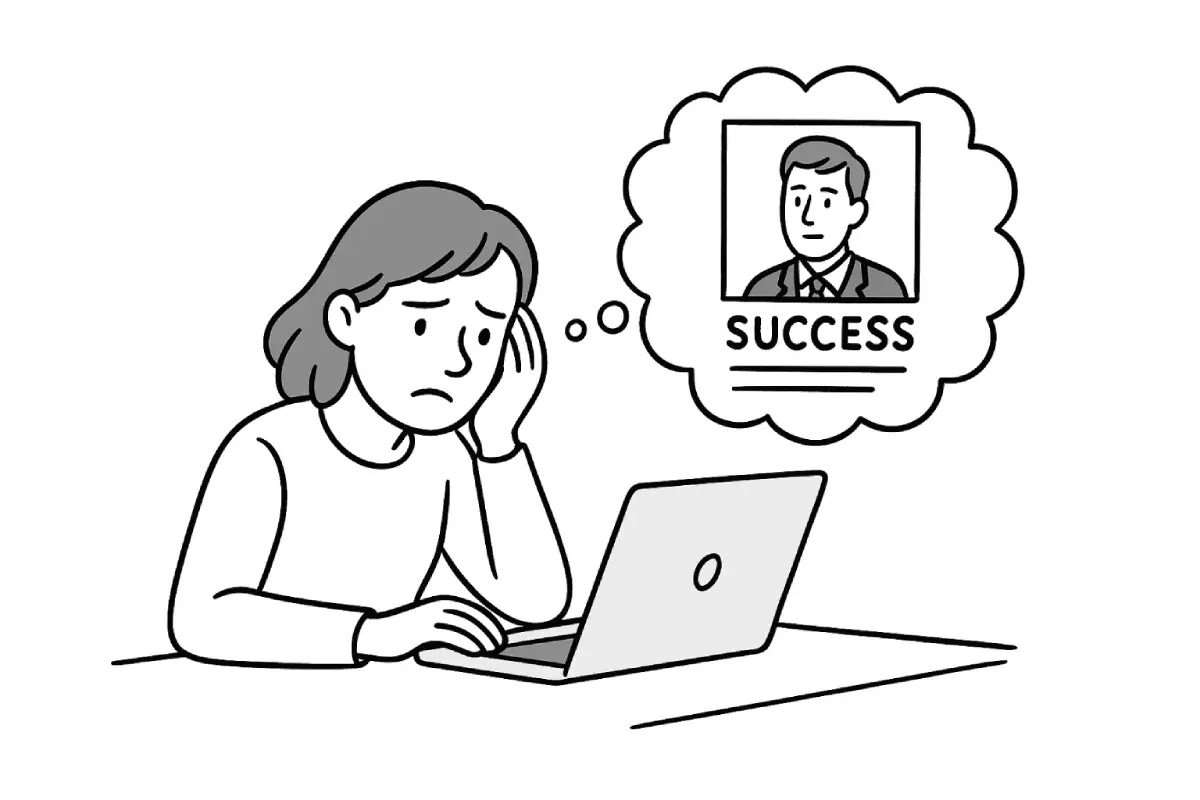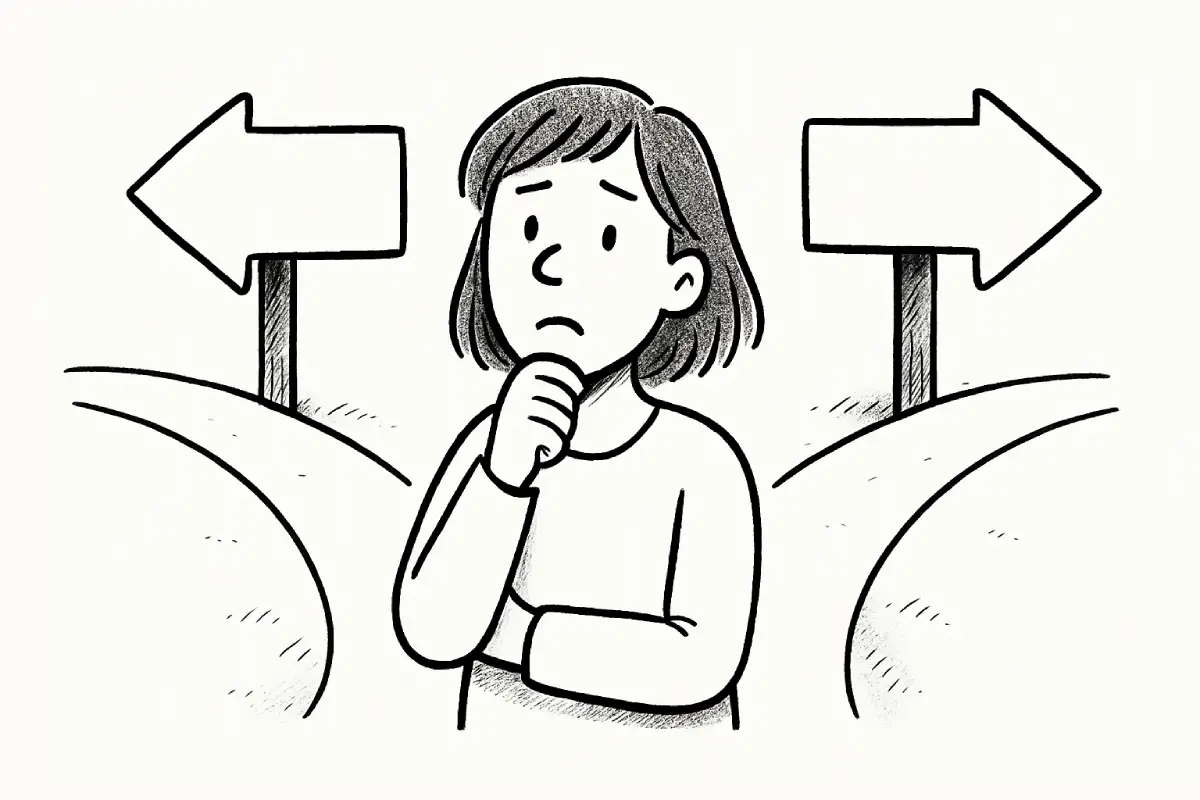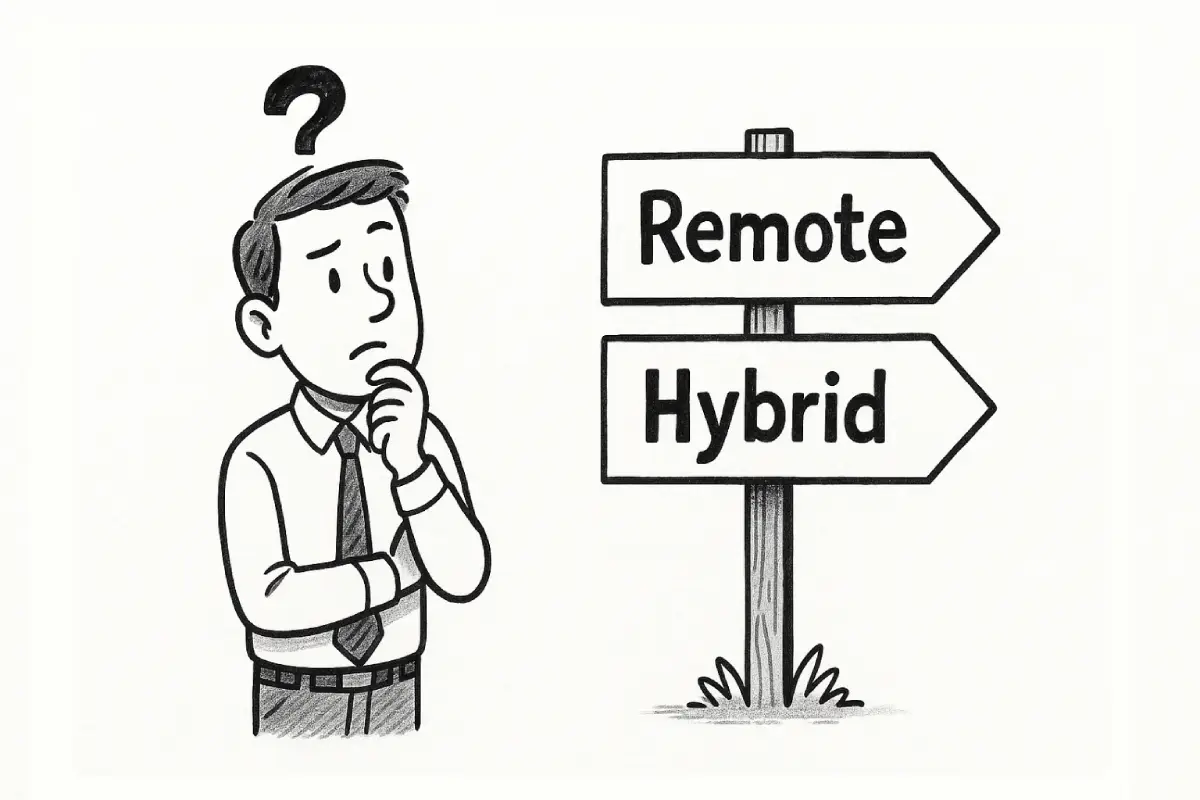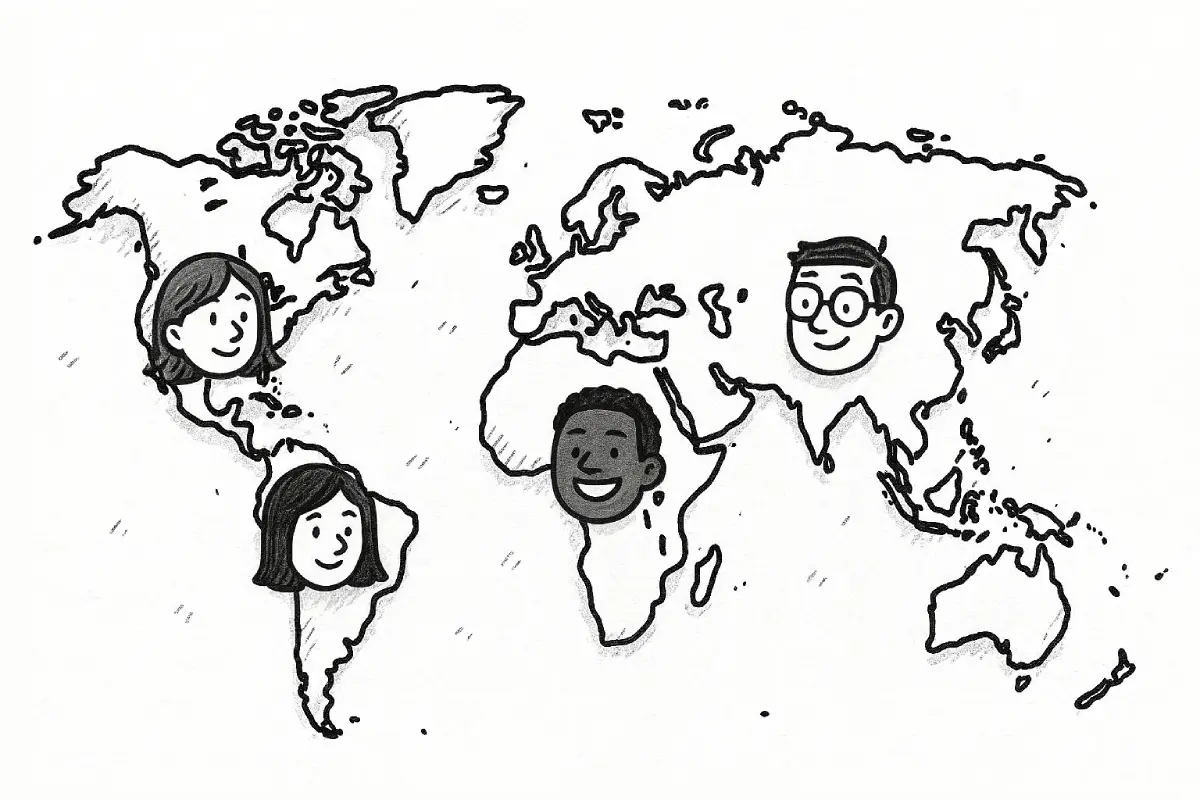It starts with a feeling. A familiar, sinking sensation in the pit of your stomach. You’ve just spent two hours—maybe more, if you’re being honest with yourself—polishing your resume until it shines. You’ve tailored your cover letter, triple-checked for typos, and finally, you hit “Submit.” And then… nothing. Crickets. Your application, the neat little package of your professional life, has just vanished into what can only be described as the Great Digital Void.
Is anyone even reading this stuff?
That’s the question, isn’t it? We’ve all been there, firing off applications like messages in a bottle, hoping one washes up on the right shore. But the shore isn’t what it used to be. It’s no longer a desk piled high with paper resumes, waiting for a human with a cup of coffee and a red pen. No. Now, the first line of defense, the gatekeeper to your next job, is very likely not a person at all. It’s an algorithm. And it’s making decisions about you in milliseconds.
This isn’t some far-off, dystopian future. It’s happening right now, in virtually every industry. Companies, in their endless quest for efficiency (and, let’s be real, to cut costs), have thrown themselves headfirst into the world of AI-powered recruiting. And while they’re patting themselves on the back for being so cutting-edge, job seekers are left scratching their heads, wondering why they can’t seem to get a foot in the door. It’s time we pulled back the curtain on this whole process. Because what you don’t know can, and absolutely will, hurt your chances.
So, What’s Actually Happening in There?
Let’s get down to brass tacks. When you apply for a job online, you’re not sending an email directly to a hiring manager. You’re feeding your information into a complex, and often infuriatingly opaque, system. Think of it less like mailing a letter and more like trying to get past the bouncer at the world’s most exclusive, and frankly, arbitrary, nightclub.
The Digital Bouncer: Applicant Tracking Systems (ATS)
The first gatekeeper you’ll encounter is the Applicant Tracking System, or ATS. On the surface, it sounds harmless enough. It is just software that helps companies organize the flood of applications they receive. But its primary function, from your perspective, is to filter. To reject. To decide you’re not worthy before a human ever lays eyes on your name.
How does it do this? Keywords. It’s a brutally simple, almost primitive, matching game. The system scans your resume for specific words and phrases that a recruiter—who may or may not have a deep understanding of the role—plugged into the system weeks ago. If your resume has enough of the “right” words, you might make it to the next round. If it doesn’t? You get that soul-crushing, automated rejection email two minutes later. Or, even worse, you get nothing at all. Just silence.
I once spoke to a recruiter who sheepishly admitted their ATS was so poorly configured that it was rejecting anyone who had “Project Manager” on their resume because the system was looking for the plural, “Project Management.” Hundreds of qualified candidates, tossed into the digital trash bin because of a single letter S. It’s madness.
This system is the reason you hear all that advice about “optimizing your resume for the ATS.” It is turned job hunting into a bizarre form of SEO, where we’re all just trying to guess the magic words that will unlock the next level. It’s a game, and a dumb one at that, but it’s the one we’re forced to play.
The AI Interviewer and the Gamified Assessment
But let’s say you win the keyword lottery. You get past the bouncer. Congratulations. Your prize? You might get to talk to… another robot.
AI-powered video interviews are becoming frighteningly common. You’ll be asked to record yourself answering a set of pre-canned questions, and the software will analyze your responses. But it’s not just looking at what you say. It’s analyzing your “micro-expressions,” your tone of voice, your word choice, your eye contact—all to determine if you have the right “personality traits” for the job. It feels invasive because it is invasive. It’s a high-tech pseudoscience, a digital phrenology that claims to find objective truth in the way you raise your eyebrow.
And then there are the games. You might be asked to play a series of “neuroscience-based” games that involve inflating balloons for points or identifying patterns. The goal, they say, is to measure your risk tolerance, your memory, your focus. What it really measures is how well you perform on a specific, decontextualized task under pressure. Does your ability to click a virtual balloon before it pops really say anything about your potential as a graphic designer or an accountant? I’m skeptical. To say the least.
The Bias in the Machine: It’s Not as Objective as They Say
Here’s the sales pitch every company that uses this tech will give you: AI removes human bias from the hiring process. It creates a true meritocracy where only the best candidates, regardless of their background, rise to the top.
It’s a beautiful idea. And it’s a complete and utter lie.
An algorithm is only as good as the data it’s trained on. And what data are these recruiting AIs trained on? Decades of a company’s past hiring decisions. All of them. Including all the messy, unconscious, and sometimes very conscious human biases that went into them.
Garbage In, Garbage Out
This is the fundamental flaw in the whole system. If a company has historically favored hiring, say, 25-year-old white men from a handful of prestigious universities, the AI will learn that this is the pattern of a “successful employee.” It will then scan new resumes looking for candidates who fit that exact mold. The algorithm doesn’t know it’s being discriminatory. It’s just doing what it was taught to do: find more of the same.
This has been proven time and time again. Amazon famously had to scrap an AI recruiting tool after they discovered it was penalizing resumes that contained the word “women’s,” as in “women’s chess club captain,” and downgrading graduates of two all-women’s colleges. The machine had taught itself that male candidates were preferable because the historical data was predominantly male. It didn’t eliminate bias; it automated it and scaled it up to an industrial level.
You hear people talk about “explainable AI,” the idea that a company should be able to explain why its algorithm made a certain decision. But right now, most of these systems are a black box. Even the people who build them can’t fully trace the convoluted path of logic that leads to a ‘yes’ or a ‘no’. They’re basically saying, “We trust the machine,” without being able to show the work. And that’s just not good enough when people’s livelihoods are on the line.
The Problem with “Culture Fit” and Personality Profiling
This gets even murkier when AI tries to quantify something as nebulous as “culture fit.” What does that even mean? Too often, it’s a lazy shorthand for “people who are just like us.” When you task an AI with finding a good “culture fit,” you’re essentially building a machine for creating a monoculture.
It rewards conformity. It looks for predictable patterns of speech and experience. It filters out the outliers the unconventional thinkers, the people who don’t fit neatly into a box. It might inadvertently filter out candidates who are neurodivergent, or who come from different socioeconomic backgrounds and express themselves differently. The very people, in other words, whose unique perspectives could be a massive asset to a company, are the ones most likely to be flagged as a “poor fit” by a machine that doesn’t understand nuance.
Fighting Back (Or at Least, Playing the Game Smarter)
So, you’re a job seeker in this brave new world. It all sounds pretty bleak, I know. It can feel like you’re powerless against the rise of the recruiting robots. But you’re not. You can’t change the system overnight, but you can learn how to navigate it. You can play the game.
Becoming the Keyword Whisperer
First, you have to make peace with the fact that your resume has two audiences: the machine and the human. The machine comes first. This means you have to swallow your pride and start thinking like an algorithm.
- Mirror the Job Description: This is the most important thing. Print out the job description and take a highlighter to it. Identify the key skills, technologies, and responsibilities. Now, make sure those exact words and phrases appear in your resume. If they ask for “stakeholder engagement,” you better have “stakeholder engagement” in there somewhere. Don’t write “communicated with partners.” It’s not the same to the dumb robot.
- Don’t Get Too Fancy: The ATS can get confused by complex formatting. Stick to a clean, simple layout. Avoid tables, columns, and graphics. Use standard fonts. It’s boring, I know, but this isn’t the time for creative expression.
- Have a “Master Resume”: Keep a long, detailed version of your resume that has everything you’ve ever done. Then, for each application, copy it and ruthlessly edit it down, tailoring it to that specific job description. Yes, it’s a ton of work. Do it anyway.
It feels a bit like selling your soul, I get it. But you have to get past the bouncer.
The Human Connection is Your Secret Weapon
Here’s the real truth, the one thing that hasn’t changed. The best way to get a job is still through a person. Your goal should be to bypass the ATS entirely.
Every application you submit into the void should be paired with a human-centric effort. Find someone who works at the company on LinkedIn. It doesn’t have to be the hiring manager—it can be someone in the department you want to work in, or an alum from your university. Send them a polite, brief message. Not “Can you get me a job?” but something like, “Hi, I saw you work at [Company] and I’m really impressed by [something specific about their work or the company]. I’ve just applied for the [Role], and I’d be grateful for any insights you might have about the team culture.”
Nine times out of ten, they won’t respond. But that one time they do? That’s your golden ticket. That person might forward your resume directly to the hiring manager. And a resume that’s handed over by a trusted colleague is worth a thousand that come through the ATS. It completely short-circuits the process. It reminds them that behind the screen of keywords and scores, there’s an actual, living, breathing person.
Where Do We Go From Here? A Look at the Future (Maybe)
There’s a growing backlash against these systems, a push for more transparency and regulation. People are starting to ask the hard questions. Lawmakers are starting to pay attention. The idea of an “AI audit”—where independent experts can check these systems for bias—is gaining traction. This is good. It’s a start.
But technology will continue to march on. The AI will get more sophisticated. The simulations will get more realistic. The line between the human and the machine in the hiring process will only get blurrier.
Ultimately, the responsibility falls on the companies themselves. They need to stop treating hiring as a data problem to be solved with maximum efficiency. It’s a human process. It’s about potential, nuance, and connection. It’s about building a team, not just filling a slot. An algorithm can not understand that. It can count keywords, it can measure the crinkle around your eyes, but it can’t gauge your passion, your grit, or your ability to come up with a brilliant idea in the middle of a chaotic meeting.
So, for now, play the game. Learn the rules, tailor your resume, and hustle to make those human connections. But don’t ever let the silence of the machine convince you that you’re not good enough. The bouncer is just a dumb robot, after all. And sometimes, the most interesting people are the ones it would never let in.
You might also like: What It’s Like to Work for a Micromanager Boss
